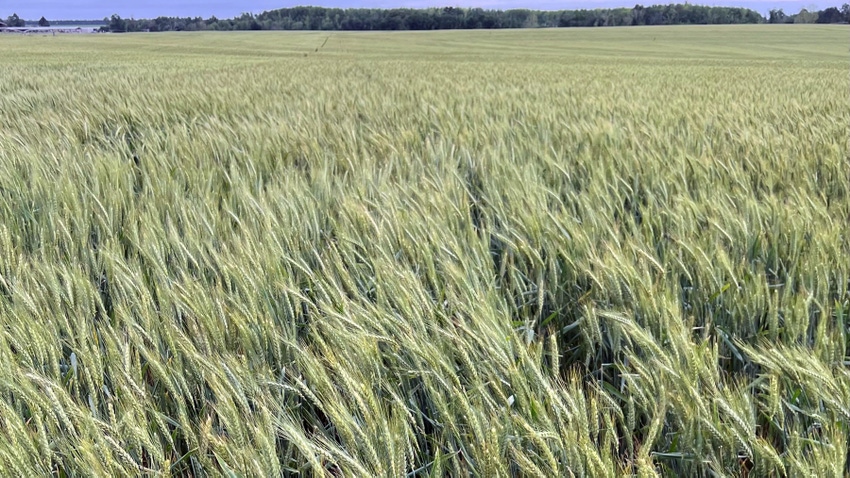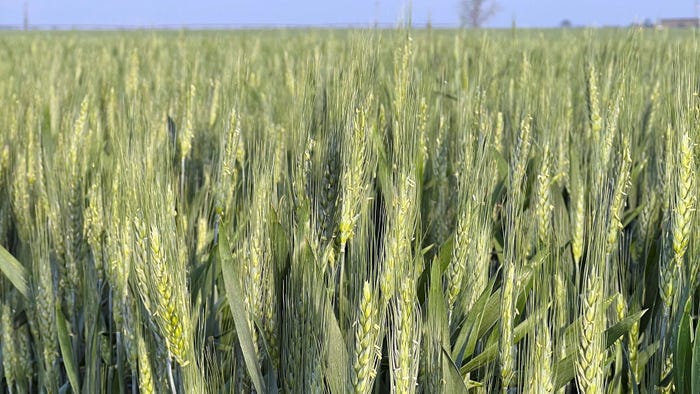April 20, 2023

By Rome Ethredge
The current Southeast wheat crop shows good promise. Here we grow soft red winter wheat for several purposes. It’s grown for temporary winter forage for cattle, often in mixes, for a cover crop for grain harvest for seed for next year, as well as for grain for human and animal consumption.
Now we currently have wheat heading, and it’s an important time for many reasons for managing the crop.
Just before heading, we have the final leaf coming out called the flag leaf. It’s important for optimum yields. Over 60% of the photosynthetic sugars going to grain production come from this one leaf. So, protecting the health of this final top leaf is very important.
We are now seeing some rust disease in wheat, and it can really cut yield prospects. In light of protecting the flag leaf, it needs to be exposed before spraying for rust if possible. Sometimes earlier sprays are necessary however, especially for stripe rust. Early sprays for the more common leaf rust of wheat are less needed.
Wheat heads appear and then blooming starts, it is not a showy bloom, but upon close inspection, you can see the male and female flower parts. It is very important to note wheat blooming due to this being when we can control Fusarium, or scab disease. The timing of fungicide application to the blooming phase is crucial. There is a Fusarium risk tool that is most useful. I have found if you click at the top left and set the model to ‘Very Susceptible.’

Watering small grains is a tough subject but one that needs to be addressed. Generally, we have higher wheat yields when we have a sunny dry spring. Credit: Rome Ethredge
The spray for leaf disease such as rust and Fusarium can often be timed to 50% flowering to control several diseases impactful to wheat yield. Be careful about fungicide choices as some can cause a worse Fusarium and problem at the grain buying point if sprayed during flowering. The opposite of what we want.
Insect pests need to be scouted for and controlled according to IPM principles as needed. Some fields have active aphids populations now, but check your state’s recommendations for the populations you are counting according to the present growth stage.
Watering small grains is a tough subject but one that needs to be addressed. Generally, we have higher wheat yields when we have a sunny dry spring, so don�’t wish for lots of rain on your crop. Not a lot of irrigation is needed if its available. As a general rule, 1 inch a week during the grain fill period will help, if we don’t get it from the sky.
Remember Jesus said, “Very truly I tell you, unless a kernel of wheat falls to the ground and dies, it remains only a single seed. But if it dies, it produces many seeds.” John 12:24
We pray that the wheat planted died to itself will produce many, many seeds, so we’ll have a great harvest!
Read more about:
SprayingYou May Also Like




